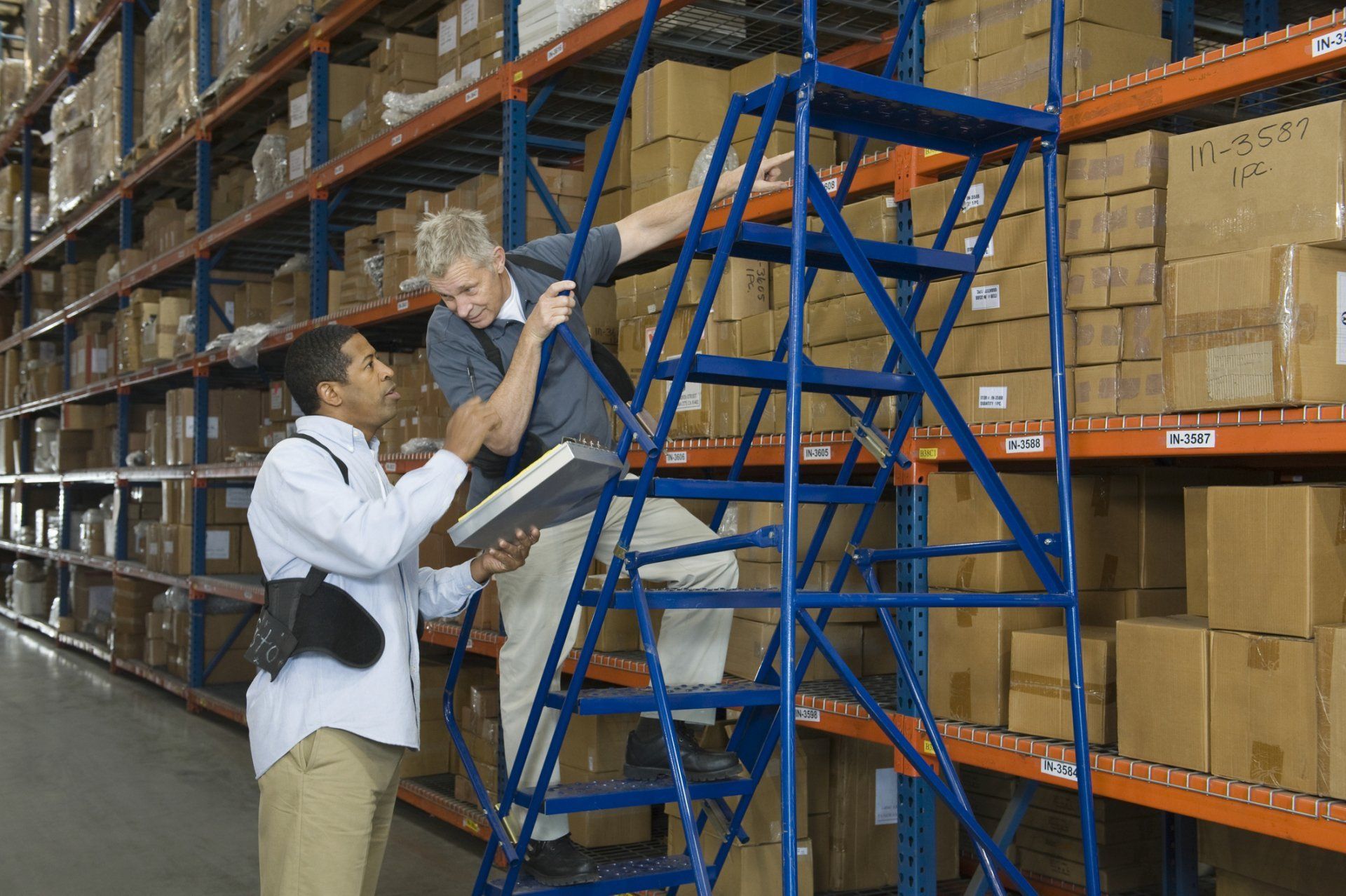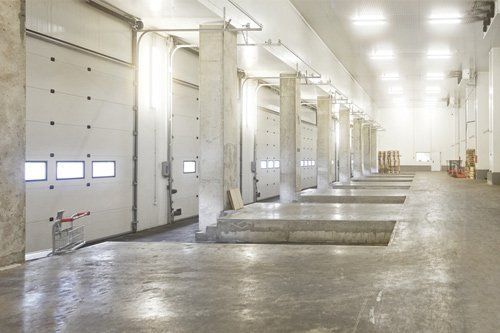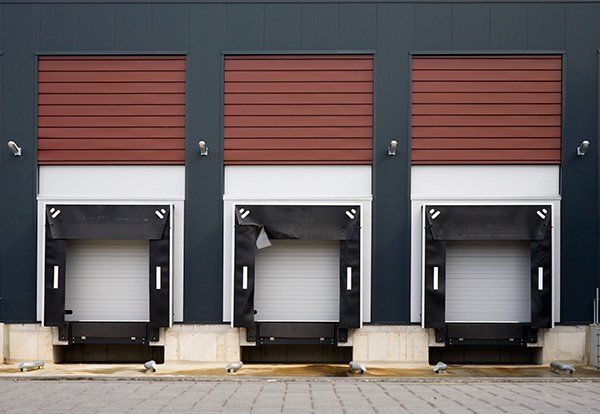Equipment Information

By Admin
•
November 21, 2018
A warehouse environment is where you expect to see product inventory processed quickly. However, the same cannot be said of your employees who deserve your time and attention as you show concern for their wellbeing. With recent employee engagement levels dropping, employee morale has become the focus for many businesses. Despite the introduction of smart warehouse technology like automation and robotics, people are still an important factor in how a business succeeds - or doesn't succeed. If your warehouse is dealing with absenteeism, rehiring, training, product sabotage, and high turnover, take a look at these ways you can increase employee morale in your warehouse. Create an Environment of Fairness Issues of fairness exist in nearly every work environment and are capable of causing low morale. Fortunately, you can do several things to create an environment that feels fairer among employees. Promotions An employee may feel a co-worker's promotion is unfair simply because they wonder why they were not promoted as well. To avoid low morale when promotion time rolls around, consider making sure each employee experiences regular, constructive feedback. This feedback provides individual workers the opportunity to understand how management feels about their progress. It also gives them the chance to make employment goals and work toward a possible promotion. Paychecks Differing pay levels can seem hugely unfair from an employee's point of view, especially when everyone is laboring under the same warehouse roof. Your employees can feel more fairly paid when you are more open about your compensation system. Do this by conducting the right research to make sure you pay your workers an amount comparable to that of similar warehouses. Make sure this amount include not just base pay. Bonuses, vacation pay, and other compensations need to be comparable as well. Helping employees feel a sense of fairness in promotion and pay can help raise morale. Give Everyone a Voice When it comes to asking for better ideas regarding the work place, why not ask the experts? Your employees are considered experts because they are the ones involved in working the warehouse. Not only will you receive suggestions for work improvement, but employees will gain a sense of ownership when they are involved in making changes. Looking for real input from your workers helps create a more positive morale in the work environment. Doing so energizes employees and their dedication to work by 21% , so go ahead and ask your crew what they think. Make Your Warehouse Fun A simple Google search can turn up a myriad of ways to make your workplace more fun. However, the dynamics of a warehouse can be challenging to liven up because of safety concerns. Instead, try focusing on ways your team can have fun after hours or during breaks. You'll find that employees who are able to bond off the clock are able to mesh together better when they are back at work. Provide Warehouse Perks Sometimes boosting morale means introducing warehouse perks for your employees. This can be in the form of installing new vending machines, allowing employees to play music, or upgrading the break room. Another way to improve workplace morale is by providing employee lockers . Doing so allows your employees to store their personal belongs and keep them safe while they are on the clock. Your warehouse can become a place where employee morale rises higher than it has ever been. You'll find that happier employees are more productive and invested in their job. That's a success you'll be able to store away for future use. If you would like more information about locker size and style for your needs, visit Naveles Industrial Sales.
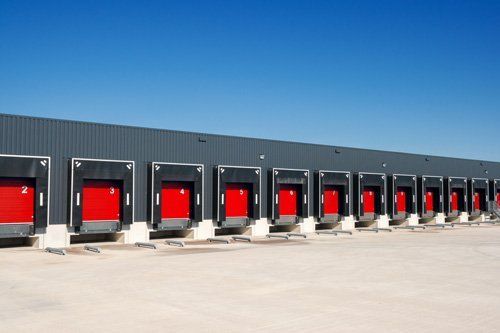
By Admin
•
September 28, 2018
The loading dock is among the busiest areas in a warehouse. As a result, this area is also prone to significant safety concerns. Streamlining operations and establishing specific safety guidelines at the loading dock can, therefore, minimize hazards, improve productivity, and cut costs. Here are a few ideas to consider in your efforts to improve logistics and safety at your dock. Provide Comfortable Working Conditions Docks can be extremely difficult work environments. Eliminate the risk of errors and injuries by providing comfortable working conditions for your employees. Dock managers can implement several strategies to improve working conditions. For starters, consider installing fans or ventilation panels to ensure proper airflow at all times. Be sure to provide adequate lighting to illuminate the dock and the inside of trailers as well. Consider investing in automated temperature control to ensure favorable temperatures for workers. Develop an Integrated Safety Strategy Create a checklist of proper equipment use to ensure safe operations in the dock area. Alternatively, consider a more wide-ranging safety strategy by investing in warehouse equipment that seamlessly interconnects with other parts of the dock. Whether you opt for a basic safety checklist or an integrated one, be sure that your dock safety strategy addresses how you will restrain the trailer, convey the status of the powered restrainer to the relevant dock workers, ensure safety in open docks, and maintain a seamless flow of goods from the warehouse to the trailer, and vice versa. Implement Carrier Requirements Improper dock scheduling can be a significant time waster. Ideally, trailers should come into the yard at a steady rate and exit on time to avoid unnecessary holdups. Avoid high detention fees and waiting times by establishing an efficient dock scheduling system. Consider your yard's capacity and the number of trucks you can load and unload per day - be sure not to exceed this capacity. Establish timelines for incoming trailers and communicate these requirements to carriers. Additionally, establish and convey the rules for late or missed carrier appointments to ensure compliance. Collect Real-Time Data for Dock Management Consider investing in technologies such as GPS tracking and radio frequency identification (RFID) to keep track of trailers long before they arrive at the loading dock. In addition to having docking rules in place, these technologies can improve efficiency by generating real-time data on incoming and outgoing trucks, loading dock status, and equipment usage at any given time RFID can reduce dock checkout times, ensures delivery of the right goods to the right destination, and warrants a zero-error supply chain environment. Automate Loading and Unloading Sequences Implement an automation strategy to load and unload goods. The right automation tools and loading and unloading equipment will largely depend on your particular business needs. Consider collaborating with an experienced warehouse equipment provider and your technology vendor to customize a sequencing schedule based on the needs of your dock operations. In addition to automating the loading and unloading sequence, look into automating process-oriented tasks within the overall warehouse environment to minimize errors. Examples of tasks you can automate include picking and shelving, labeling and scanning, inventory management, and back-office operations. Dock operations can have a significant impact on customer satisfaction, employee productivity, supply chain efficiency, and your business's bottom line. A well-thought-out automation strategy, combined with the right equipment, can help improve efficiency and safety at your loading dock, as well as set you up for financial success. At Naveles Industrial Sales , we understand that purchasing warehouse equipment is never easy. If you are looking for new and used warehouse and dock equipment in Miami, Florida, get in touch with us today.
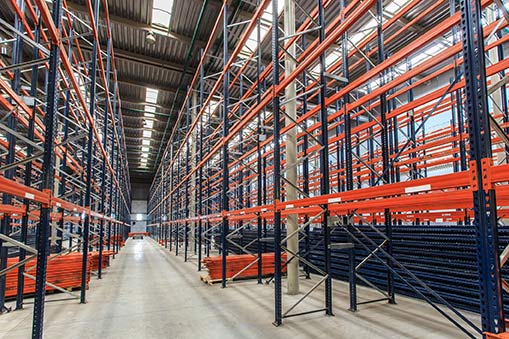
By Admin
•
July 23, 2018
Shelving plays an essential role in warehouse organization and safety. There are numerous variations of industrial shelving systems, and your business needs will determine your choice of shelving. If you are looking to install new shelving or to replace the existing storage system in your warehouse, here are five options to consider. 1. Steel Shelving Steel shelving is the most common type of shelving in warehouses. Consider this shelving system for storing cartons and small items. You can organize the shelves horizontally as high-rise storage systems or as floor-level units. Steel shelves are durable, versatile, and inexpensive. They feature compression clips, which makes them easily customizable. To accessorize, customize, and maximize space, opt for steel shelving with modular drawers, doors, dividers, or bin fronts. Although steel shelving is more versatile than other shelving types, maneuvering the braces and clips can make installation more difficult. Look at other shelving options such as wire and rivet shelving for mobile storage. 2. Rivet Shelving Rivet shelving is equally sturdy and versatile. Shelves are built from durable steel and use decking to support the load. Rivet shelving can handle a large amount of weight, making it ideal for storing heavier objects in large-scale warehouses. Unlike steel shelving, rivet shelving does not have clips or bolts and is, therefore, much easier to assemble. Rivet shelving also offers the most extensive range of sizes and the highest load carrying capacity. In spite of its sturdiness, value for money, and durability, rivet shelving is not aesthetically appealing compared to other options such as wire shelving. Additionally, compared to steel shelving, rivet shelving has fewer customization options. Because rivet shelves are heavy, bear in mind the cost of shipping if you are considering them as an option. To save on costs, consider buying the decking locally to reduce the shipping weight of the shelves. 3. Wire Shelving Wire shelving combines aesthetics and function to provide an efficient shelving solution for warehouses. Wire shelves do not have side or back braces, and you can access them from all sides. Consider this type of shelving if visibility, unhindered air circulation, and hygiene are priorities in your facility. Wire shelving is among the easiest to assemble and to clean. Opt for wire shelves for storage of lighter items. It is not as durable and strong as the rivet or steel shelving, it is more expensive than rivet, and has a limited range of sizes. On the upside, wire shelving mounts well on casters and is excellent as a mobile storage solution. It comes with numerous custom configurations with options for wall mounting and installation of tilt shelves. Consider wire shelving if space limitation is an issue in your facility. Wire shelving can easily fit into corner spaces, right-angled nooks, and straight areas. 4. Boltless or Clipless Shelving Boltless or clipless shelving is becoming increasingly popular in industrial applications. This type of shelving comprises particleboard and steel bracing. It offers a large capacity per shelf level and is perfect for storing lightweight items. While it is not as strong as steel or rivet shelving, boltless or clipless shelving is easy to assemble and to maintain. 5. Bulk Rack Shelving Bulk rack shelving is a heavy-duty storage solution best suited for warehouses looking to maximize space. This shelving is durable and offers a reliable shelving option for hand stacking boxes. Buck rack shelving can easily mount on casters for mobility, and because the shelving is boltless, it is easy to assemble. The right shelving can keep your warehouse more organized, protect inventory, improve employee safety, and save you money. At Naveles Industrial Sales , we can help you find the best shelving for your needs. Call us today for consultation, expert advice, and industrial storage solutions.
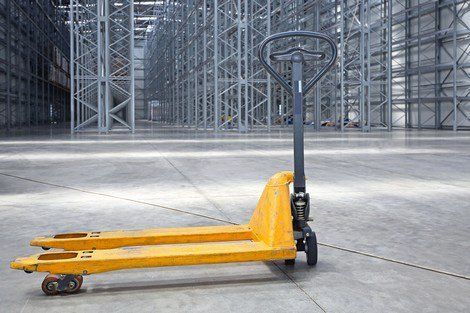
By Admin
•
May 30, 2018
When it comes to inventory management, few tools play as key a role as a good pallet jack. These handy tools allow workers to easily lift and move pallets weighing up to several thousand pounds in weight. Better yet, being self-propelled, pallet jacks are a much safer way of moving merchandise than forklifts. Yet pallet jacks can be dangerous if wielded incorrectly. For this reason, promote safe pallet jack use among your workers with these three tips. 1. Push, Don't Pull The greatest feature of a pallet jack is that it allows you to move enormous weights with relative ease. Of course, it takes muscle to get a fully loaded pallet jacket moving - and to keep it moving. Once a pallet jack is in motion, the act of stopping it may be more difficult than you think, thanks to the significant momentum of all that weight. Pushing is the best way to both start and stop a pallet jack. For one thing, human beings are capable of pushing almost four times more weight than they can pull. This makes it easier to get even the heaviest pallet jacket moving. Pushing also makes it easier to steer a pallet jacket. Those who move pallet jacks by pulling put themselves at greater risk of injury. The pallet jack can run into the worker in the event that they need to stop quickly. For these reasons, insist that workers resist the temptation to pull a pallet jack. Pushing will make the job easier - and safer - for everyone. 2. Know Your Weight Capacity Every pallet jacket possesses a weight capacity. This number, which ought to be clearly labeled on the jack, tells you the maximum amount of weight the pallet jack can bear. Exceeding this number puts your pallet jack at risk of damage. If the metal forks of your pallet jack are deformed under the excessive weight, the cargo could be at risk of tipping over. As you can imagine, this is a highly dangerous scenario for the person operating the pallet jack - as well as for any other workers in the area. Therefore, be sure that all of your workers understand and observe the weight capacity of the pallet jacks in your warehouse. 3. Inspect Your Pallet Jacks Regularly Even if weight capacities remain within acceptable limits, a pallet jack may suffer damage as time goes on. Therefore, you must be proactive about inspecting your jack for signs of trouble. In this way, you may be able to forestall dangerous accidents in your workplace. Begin by inspecting the forks themselves. Use a level to ensure that both of them remain level. A strict 90-degree angle should be kept between the forks and the upright portion of the pallet bed. Measure the width of the gap between the two forks. This value should remain consistent along the forks' entire length. Next carefully check the pallet jack for any signs of rust or corrosion. The bottom side of the forks is the most important place to check. Even when wielded properly, pallet jacks often scrape or bang against concrete floors. Excessive corrosion will weaken the forks, making them more susceptible to collapsing under heavy loads. A pallet jack is one of the most useful tools you can own when it comes to moving merchandise. Be sure your workers possess a thorough understanding of pallet jack safety before your employees use these tools. For more information, please don't hesitate to contact the pallet jack sales experts at Naveles Industrial Sales. We supply pallet jacks and are knowledgeable about using these tools safely.
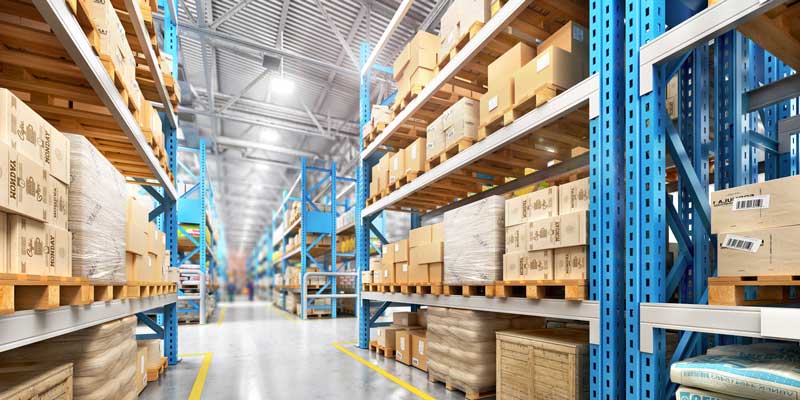
By Admin
•
April 3, 2018
Temperatures inside a warehouse can vary a great deal. One area may feel like the North Pole, and another may even feel like a sauna. It's important to maintain consistent comfort levels for those who work in the facility. Here are a few ways to do just that. 1. Pay Attention to Your Mini-climate Zones A good place to start with temperature balance is to take note of where temperature fluctuations occur. Even if you have a heating or cooling system which maintains the indoor climate, you'll likely find areas that don't quite fit the reading on the thermostat. Employees who work in the warehouse can give you helpful insight into which areas you should observe. Many variables can cause the temperatures to fluctuate from area to area in a warehouse or other facility. Consider, for example: The types of materials you're handling The amount of lighting in particular areas Areas where drafts can come in Areas where the insulation ends or thins out The machinery running in the facility Each of these can cause the indoor temperature to fluctuate, either subtly or drastically. If the work climate is uncomfortable for anyone, you will see less productivity and efficiency, and more disgruntled personnel. It's a good idea to do something about the situation sooner than later.
CONTACT INFORMATION
PHONE: (305) 635-6044
| (888) 479-9090
FAX: 305-634-1659
EMAIL: sales@naveles.com
ADDRESS: 3747 NW 52nd St. Miami, FL 33142
BUSINESS HOURS:
- Mon - Fri
- -
- Sat - Sun
- Closed






OUR LOCATION
Content, including images, displayed on this website is protected by copyright laws. Downloading, republication, retransmission or reproduction of content on this website is strictly prohibited. Terms of Use
| Privacy Policy


